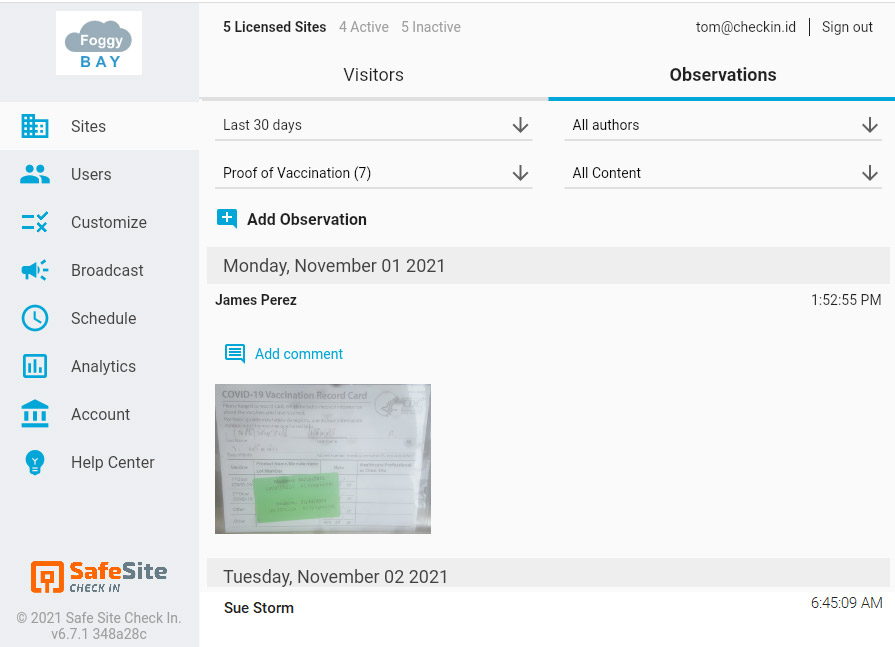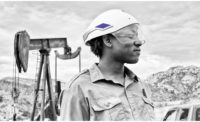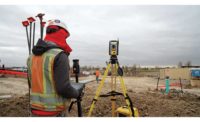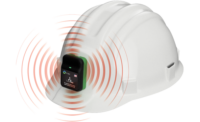Quarterly Tech Focus
Q4 Tech Report: Moving On to the Next Normal
The pandemic forced adoption of new technologies, but what's really changed?

With virtual collaboration now a standard practice, tech adoption has accelerated.
Photo courtesy Gilbane Building Co.
At this point, well into the era of working with COVID-19, questions over remote work, remote collaboration and better awareness of the workforce on construction jobsites can seem like settled issues. But as the world seeks to move on from the pandemic and get from this new normal to the next normal, technology adopted to stay on track during the height of lockdowns is getting another look. Just because we can work this way, is this the new way to work?
“Things have changed,” notes James Barrett, chief innovation officer at Turner. While collaboration and monitoring technologies were already seeing use in construction prior to the pandemic, firms had to pivot quickly to stay in business amid new restrictions and regulations. “I’d say we [as an industry] accelerated the adoption of technology by five years or more in just the last year,” says Barrett.
While companies like Turner quickly standardized on video teleconferencing and other workarounds to keep their project teams in touch, there are bigger shifts underway, according to Barrett. “Some things, like Zoom and [Microsoft] Teams, those will stick around forever. But there are broader trends,” he says. “We’ve got a generational shift at hand in the next few years. I think COVID could be seen as a catalyst towards bigger changes.”
Many large contractors had already implemented cloud-based document and project management prior to the pandemic, so the transition to remote work and limited jobsite access wasn’t as disruptive as it could have been. But as employees were also freed up from commutes and jobsite visits, observes Barrett, Turner has seen massive growth in internal use of analytics and business intelligence, with employees seeking better ways to keep track of just what was going on with their projects. “It’s been an explosion of dashboards, analyzing department and project data, all tied into our structured databases.” Efforts that began as tinkering in free time have become standard ways of keeping tabs on projects, says Barrett. And it’s changing how people work. “They’re really embracing it, making decisions that are much more evidence-based, fact-based. It’s giving us better insights into the business.”
The idea that the pandemic response has torn down some barriers to technology adoption isn’t limited to Turner. A recent study by Autodesk and business research firm Altimeter proposes a possible future based on these trends, in what they call “digital convergence.” It’s a concept Autodesk has been exploring for some time, where technologies from different industries begin to cross over, and companies are more willing to take on work that traditionally would be done by other disciplines and professions.
It was also a concept that Autodesk researchers worried they were only seeing because they wanted to, given the broad array of software the company offers to different industries. “Was this real or something we thought up?” recalls Alexander Stern, cross-industry technology strategist at Autodesk. The company commissioned the study, and interviewed hundreds of professionals in AEC, manufacturing and the digital media industries on their opinions about their use of technology. “We definitely saw digital convergence accelerate during COVID,” says Stern. “As companies are forced to digitize more of their business, it opens up the door to things being connected in new ways.”
Convergence can be as simple as allowing different business units to work more closely, or realizing that technology working in one part of the business is applicable elsewhere. The display of resourcefulness that happened during the early pandemic made companies more fluid and open to unusual arrangements. “It’s counter intuitive, but it looks like that acceleration from COVID was the catalyst. And we think the next wave of technological change will be characterized by this convergence trend,” Stern adds.
“It’s not linear development. There will come a tipping point where things really take off. I don’t think we’ve seen that yet in AEC.”
Alexander Stern, cross industry tech strategist, Autodesk
The Autodesk-Altimeter report rated companies and industries along a digital maturity curve, and Stern says the firms further along in digitizing their processes have fared better during the pandemic, and that a gap is emerging between high-tech and low-tech firms. “Those companies not on this path were hit very hard—they saw depressed revenue. It’s going to take them longer to get back on the horse.” And while construction has always been seen as slow to adopt technology, Stern says some firms are getting closer to a breakthrough. “It’s not linear development. There will come a tipping point where things really take off. I don’t think we’ve seen that yet in AEC. But with convergence, you’ll see companies come out of left field with a solution and a whole new value proposition.”
The pandemic has made some in the industry more open to trying out new things, and finally broke some logjams on adoption of new technology, says Jason Pelkey, chief innovation officer at Gilbane Building Co. “It did accelerate a lot of stuff, and it’s not going away. Very little of it is going to fall off.”
Pelkey sees the industry going beyond remote collaboration tools, and even further into sensor technologies and the Internet of Things. The pandemic created a situation where it was vital to know who was on or off a jobsite, and the lack of site visits by stakeholders made all forms of remote monitoring and tracking far more crucial to staying on course. “Things like worker tracking, that is where things are headed,” he says. “From the jobs we’ve done it on, people see the benefits. It’s getting to where it’s a common occurrence on a jobsite, and it’s enterprise-wide.”
Like other contractors, Gilbane felt the pain in 2020 of not being able to send out people to walk jobsites and bring in project team members for onsite updates. Pelkey had already been an advocate for delving deeper into project data, but he was now facing tremendous demand for this data as well. “The pandemic helped me push the value proposition of analytics,” he says. “We had groups [within Gilbane] using it and seeing benefits, but this really accelerated the curve.”
Like so many of the technologies and processes that took hold during the pandemic, analytics was ready but underutilized, explains Pelkey. “These ideas were maturing all along, but technology is slow to be adopted as a whole in this industry. Now people are more accepting of technology, since it helped them through the pandemic—they see what it did for them.”
Image: Turner

Image: Safe Site Check In
Staying on top of projects during the pandemic has spurred broader use of analytics and digital tracking of worker status.
*Click the images for more detail
For engineering firms, the changes often came down to whether companies already had invested in cloud services. “We had already started to migrate our projects to the cloud-based environment, so we had relocated 40% of of projects to the cloud by the end of 2019,” recalls Paul McGilly, associate principal, digital design at Buro Happold. McGilly oversaw the migration of the rest of the engineering firms 250-plus projects across its 25 global offices to a cloud-based BIM 360 environment over the course of 2020, and he says it was a surprisingly smooth transition.
“At Buro Happold the cloud is standard, we’re not going back to the ways of doing things,” says McGilly. The company implemented work-from-home for its employees during the pandemic, and even as some people have since return to offices he says flexible schedules are now the norm. And the option of remote work will help the firm to meet its goal of doubling its workforce from roughly 2,000 employees at the end of 2019. “It has been a benefit for procuring people from further afield,” he says.
As with other firms, getting project data to the cloud opened up possibilities for better analytics and deeper data diving. At Buro Happold, one result has been an acceleration of the firm’s internal cloud-based data analysis engine, the Building Habitats Object Model, or BHoM. Employees with a bit of programming skill have been able to test out their ideas against the firm’s historic data, developing new automated design processes and even carbon calculators for sustainability efforts. “I think we’re moving on from traditional delivery methods,” says McGilly. “There’s a whole conversation happening on digital transformation.”
Related Article: Agile Telepresence Robot Offers a Different Spin on Remote Meetings
Not every piece of technology adopted during COVID-19 stuck. Walbridge invested in installing huge video walls in its construction trailers, assuming it would help show all the faces for video calls. But their actual usage shifted over time as the novelty wore off. “It’s an evolution that’s occurring,” says John Jurewicz, director of innovation at Walbridge. Once you’ve seen people on camera, it’s not worth pressuring them to keep it on all the time, he says. Instead, teams use the screen space to mark up drawings and models in real time. “When people are solving a problem together, they don’t even care about video chat. It’s like the old days, huddled around a light table overlay working out ductwork and cable runs.”
Walbridge had also invested in worker tracking technology for contact tracing on its jobsites during the pandemic, and Jurewicz says it would be hard to go back to not having that flow of data coming in from the site. “It’s throwing the baby out with the bath water to stop the contact tracing [measures] now,” he says. “I now know who is here on the site—this stuff doesn’t lie.”
Being able not only to know who is on site at any given moment but also to have a record of who came and went has become a huge asset. Jurewicz says it has become an ad hoc audit trail for figuring out how delays happen and when milestones are passed. And with these success stories, he now has the data to show others on project teams the value of putting sensors and tracking devices on material deliveries and heavy equipment. “This can change our behavior, the way we do things. We start thinking about putting sensors on the things that matter the most to the project.”
For companies that sprang up in response to the need to track workers during the pandemic, there has been a surprising response from customers who want to use their technology for other tasks. Safe Site Check In uses QR codes posted on jobsites to log workers in through a mobile website, asking about COVID-19 symptoms and tracking who’s on site for contact tracing. The company has added capabilities for tracking vaccine status, but users are finding ways to use it for general safety as well, says Tom Tortolani, Safe Site Check In CEO. “A majority of our business now is people who’ve recognized that having an electronic audit trail of everything that happens on site is invaluable,” he says. In fact, site safety managers are already using the web portal to require visitors to watch safety videos or view updated protocols.
Finding new uses for pandemic-related technology has also prompted further internal investment in innovation. Turner’s Barrett says the creativity he’s seen from employees during the pandemic helped convince the company to go forward with plans to incubate a tech startup from within the company. Teaming up with a venture capital firm and planning to open it to applicants in December, Turner will have an “entrepreneur-in-residence” with the goal of building a technology startup from scratch, focused on solving specific construction problems.
“We’ve worked with lots of startups over the years, and we know the variables that affect success. So why not manage it ourselves?” asks Barrett. Firms that weathered the pandemic may have coasted on earlier tech investments, but they all need to think about getting ready for the next big challenge. “These past couple years of COVID have taught us we need to be prepped for the future, not just wait for surprises,” he says. “Let’s solve some industry problems.”




